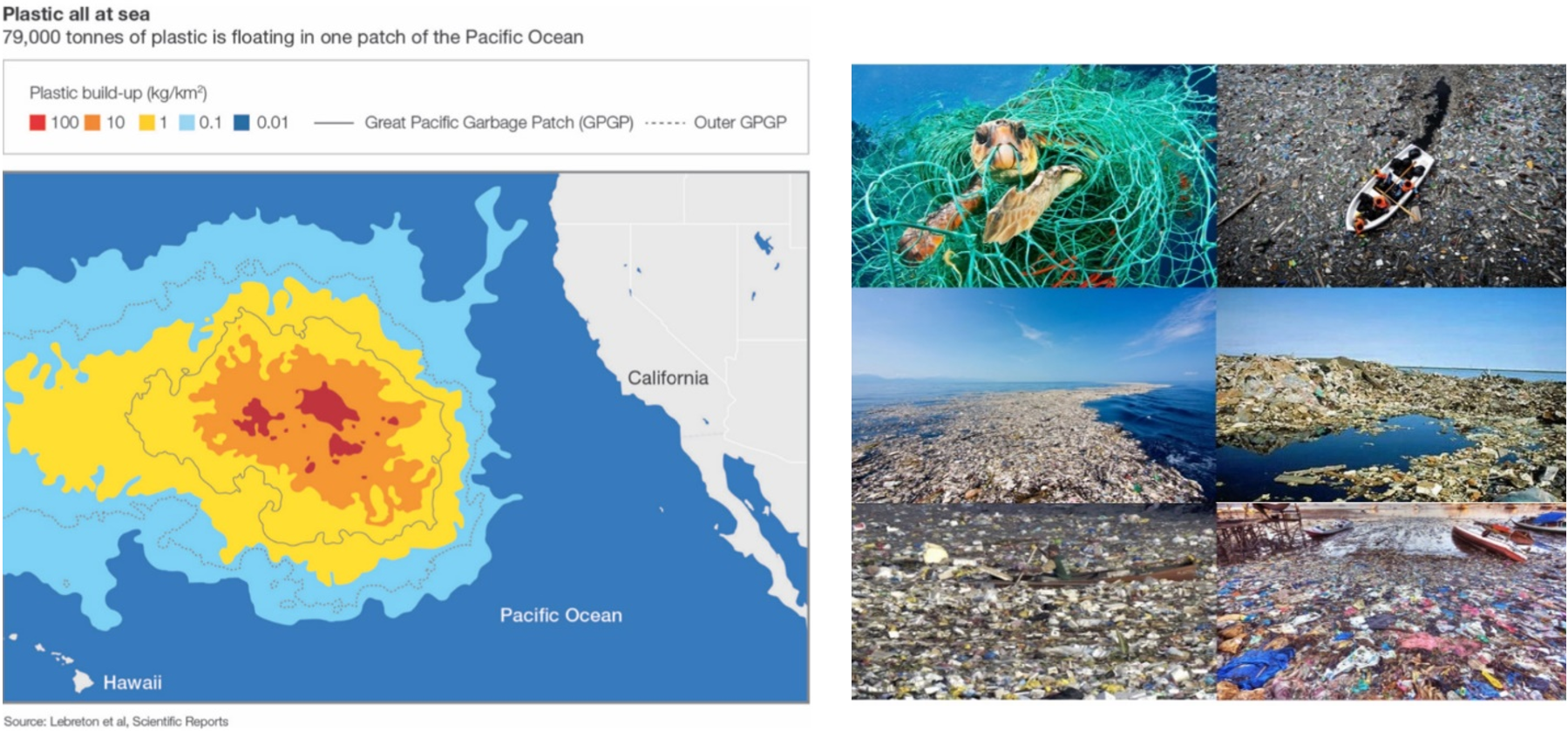
Millions of tons of trash pollute our oceans, destroying our ecology and killing wildlife
Science and society are well aware of this problem and have invented promising tools to help combat the growing threat of ocean trash. The Ocean Cleanup Project, for instance, recently launched a gigantic sieve consisting of floating pipes and netting that corrals trash into a U-shape for future processing.[4] In concept, several of these sieves would float with ocean currents to slowly accumulate ocean trash over time, with the hope of eventually improving marine environments. They are not alone in their efforts, as several other organizations have emerged to help tackle this problem with 4Ocean's Mobile Skimmer and RanMarine's WasteShark as notable standouts.
Itself a variant of a Cogeneration Facility in concept, Trident Facilities deploy several technologies in a cogenerative capacity to use excess energy to produce supplemental resources and cleanly dispose of ocean trash. Here’s how they work:
- The primary power source of a Trident Facility is an SMR, which provides the core power for ocean trash gasification and the residual energy needed to power auxiliary systems.
- A cooperating series of Trident Facilities would scour the oceans and suck in trash from one of their four floating legs or a central lift. Ideally, these would work in conjunction with floating trash collectors like those mentioned above. From there, trash would be processed via a plasma gasifier to become syngas or the slag that can be turned into useful materials.
- The excess energy generated from the SMR and the plasma gasifier would be further used to extract fresh water and hydrogen fuel from seawater, just as with Cogeneration Facilities. This could be used to resupply large ships on-demand, enabling Trident Facilities to serve as de-facto ports or emergency safe havens.
- Beyond trash gasification, hydrogen production, and seawater desalination, any excess energy produced by Trident Facilities would be used to power atmospheric scrubbers to reduce air pollution and greenhouse gasses in the atmosphere.
Trident facilities earn their namesake because they perform three unique roles: ocean cleanup, resource production and atmospheric scrubbing. They enable us to work to eradicate ocean trash, while using the byproducts to make useful materials. This helps us come ever closer to the material revolution Scarcity Zero seeks to make the new normal.






